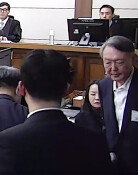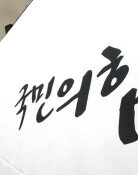[Opinion] Starbucks In the Forbidden City
[Opinion] Starbucks In the Forbidden City
Posted July. 17, 2007 03:16,
Chinese people rarely use foreign brand names as they are. They call T.G.I. Fridays, a family restaurant, Shinchiwochanting focusing on Friday. That means a Friday restaurant. Kentucky in Kentucky Fried Chicken is called Kundeoji. Starbucks, the American Coffeehouse chain, is called Singbaker. Sing refers to star and baker is the Chinese pronunciation of bucks. But for all the skepticism about its plan to go to China, where tea-drinking is an age-old tradition, Starbucks made successful forays into the country in 1999.
With the number of Starbucks stores in China reaching 230, its outlet inside the Forbidden City in Beijing reportedly closed its doors after succumbing to criticism from netizens for damaging traditional Chinese culture. The campaign against Starbucks began in January when a TV anchor argued on his blog, Starbucks doesnt fit with the Forbidden City, which is the essence of traditional Chinese culture. This controversy is reminiscent of The Lexus (globalization) and the Olive Tree (identity) elucidated by Thomas L. Friedman.
Netizens joined forces with the broadcaster, saying, We still vividly remember how the eight allied nations damaged Yuanmingyuan Park, a royal garden in Beijing, and how the allied armies ravaged the Forbidden City at the end of the Qing Dynasty. We cannot allow Starbucks. With the closure of the outlet, many Chinese seem to be pleased, thinking that their national pride has been restored. However, driving out foreign capital without good reason is undermining its international credibility and making foreign companies feel anxious about their investment.
Chinas nationalistic tendency was seen in a recent trade war with the U.S. as well. When the U.S. took issue with the safety of China-made goods, in particular, food, China stopped the import of frozen poultry products processed by seven U.S. manufactures on the grounds that their products contained food additives and germs. They also found faults with the safety of U.S. manufactured cell phones. These acts look like tit for tat to cover up the flaws of Chinese products. But they dont seem to fit the country which has already emerged as the worlds fourth biggest economy.
Chung Seong-hee, Editorial Writer, shchung@donga.com






![“설거지해도 그대로”…냄비 ‘무지개 얼룩’ 5분 해결법 [알쓸톡]](https://dimg.donga.com/c/138/175/90/1/wps/NEWS/IMAGE/2026/01/15/133164664.3.png)
